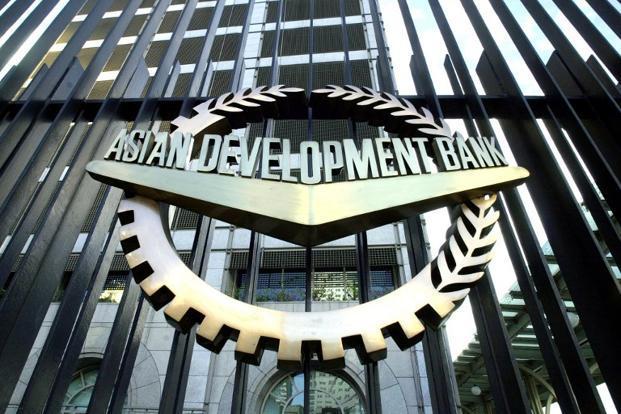 |
Headquarters of the Asian Development Bank in Manila (AFP file photo) |
SEJONG -- Skepticism is growing over the Korean economy’s growth targets due to a variety of downside risks at home and abroad, though the government had predicted the economy would expand by 3.1 percent this year.
The gloomy situation could be seen from the recent announcement of international organizations and rating firms, who started revising down their outlooks on the 2022 gross domestic product growth for Korea.
In March, Moody’s Investors Service and Fitch Ratings both slashed their outlooks on the nation’s GDP growth to 2.7 percent from their earlier forecasts of 3 percent.
They were estimated to have reflected a spike in energy prices, including crude products, in the wake of the Ukraine-Russia war into projections for the Korean and other major economies.
Meritz Securities also revised its prediction down to 2.8 percent, from its earlier estimate of 3 percent.
Their pessimistic projections came while the government and central bank still maintained their growth targets within the 3-percent range. The Finance Ministry posted a 3.1 percent growth target, and the Bank of Korea posted a 3 percent growth target.
On Wednesday, the Asian Development Bank also made a revision, cutting its outlook by 0.1 percentage point to 3 percent.
Its prediction is the same as the figure suggested by the International Monetary Fund in March.
“After exceptionally high growth in 2021 from a low base in 2020, the (Korean) economy is expected to settle into more sustainable growth at 3.0 percent in 2022 and 2.6 percent in 2023,” said the ADB.
But the Manila-based organization predicted that the economic fallout of the Russian invasion of Ukraine may possibly affect all of Asia, including Korea in terms of sharp increases in prices of energy and food. However, it noted that the war “will most affect the Caucasus and Central Asia.”
According to its predictions on countries in Asia, Korea’s GDP growth is likely to fall short of the average growth forecast of 4.7 percent for East Asian nations. Its outlook on China reached 5 percent.
Last month, the Washington, D.C.-based IMF suggested that heightened global uncertainties and interest rate hikes among developed countries could be major downside risks to Korea’s growth outlook.
It also highlighted the surge in infections of the COVID-19 omicron variant, elevated household debt and high real estate prices.
Market insiders say a core issue surrounding the economy is consumer prices alongside the ongoing pandemic, as recent inflationary pressure is posing a burden on households.
A 4.1 percent surge in consumer prices in March 2022 on-year contrasts to the growth of 1.9 percent in March 2021, according to data held by Statistics Korea.
The BOK has been pressured to raise the benchmark interest rate by 25 basis points to 1.5 percent per annum to tame consumer prices during the meeting of the monetary policy committee, slated for April 14.
But another hike could further hamper the capacity of more households to spend, in a situation where the outstanding household debt reached an all-time high of 1,862 trillion won ($1.52 trillion) as of the end of 2021.
In particular, those who took out mortgages on floating rates have faced a growing interest burden amid the monetary tightening.
By Kim Yon-se (
kys@heraldcorp.com)







![[Today’s K-pop] Blackpink’s Jennie, Lisa invited to Coachella as solo acts](http://res.heraldm.com/phpwas/restmb_idxmake.php?idx=644&simg=/content/image/2024/11/21/20241121050099_0.jpg)
